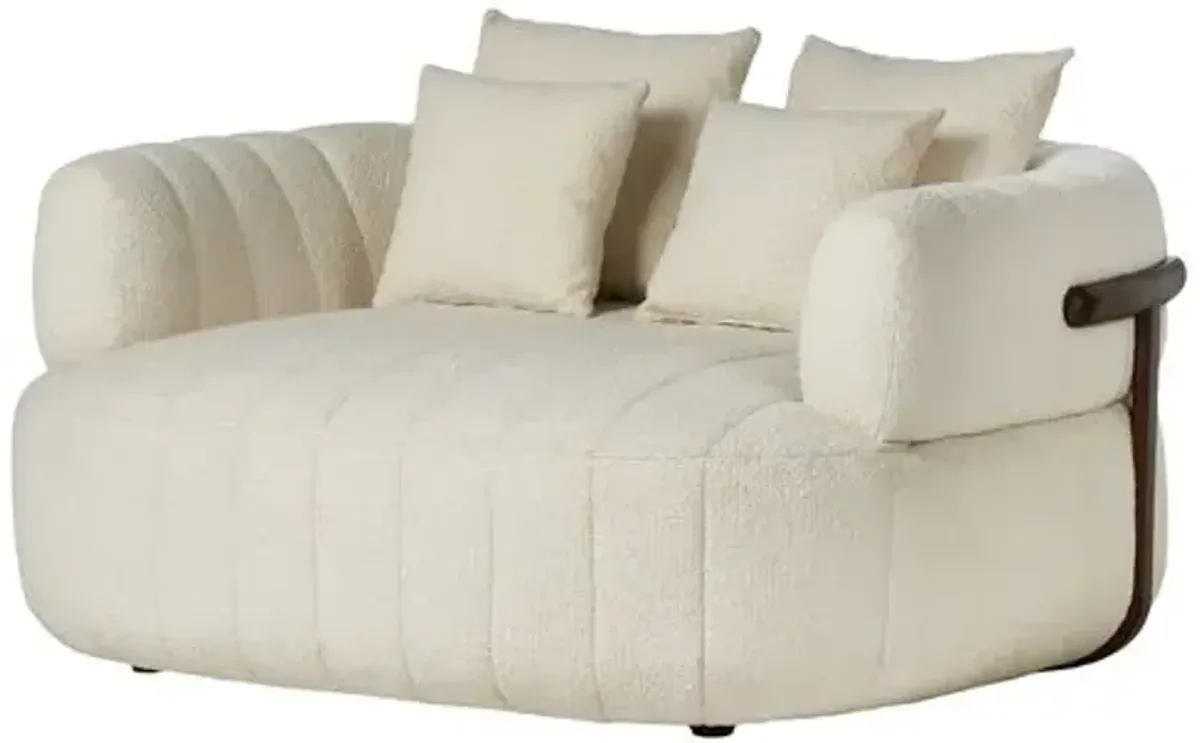If you’re looking to elevate the design of your living room, den, or any space where people gather to socialize and relax, an entertainment center or TV stand can make a great focal point.
TV and media consoles are also great multifunctional platforms. As electronics advance, it’s only fitting to upgrade your room’s aesthetic and furniture to be suitable for your growing devices and storage needs. Read our complete guide to learn more about choosing the right unit to host your home entertainment.
Before You Buy
The ideal home entertainment center or TV stand should blend style and functionality seamlessly — easily flowing with the room’s design while helping keep clutter to a minimum with cable management and other organizing storage features. Below are three key considerations to help you decide which entertainment center fits your needs.
Choose the location
To make your TV the focal point of the room, it’s important to choose the right placement. Make sure your placement checks off all these boxes:
•Choose a spot that’s close to a power outlet to power your TV and other devices, while also helping conceal wires.
•If there isn’t a convenient outlet nearby, ask your electrician or cable company if splitting wires and making new cable lines and electric outlets is possible.
•Avoid placing directly across from a window to minimize creating a glare on the screen.
•Check that the TV will be easy to see from your sofa and other seating.
Take Careful Measurements
Once you have the ideal location to set up your new investment, it’s time to measure the space. Get all the following measurements before you start shopping:
1. Measure the dimensions of the space where you’d like to place your entertainment center — particularly the wall length and the desired depth of the piece.
2. Make sure the length and depth allow for walkways and paths around the existing furniture and the new entertainment center. The addition should not obstruct the traffic flow of the room.
3. Measure your television or screen diagonally from corner to corner. You’ll also want to know the length of the TV's frame. If you are working with an older model television, note the TV's depth to ensure your chosen stand isn’t too narrow.
If you’re using a projector with a screen, you’ll want to mock-hang the screen and measure your desired width and height. If you’re only using a projector, you will want to mock-project an image to measure your desired width and height to ensure there’s no obstruction to your viewing.
4. Allow for an extra 15 centimeters of width on either side of your screen, television, or projection for a more balanced look.
5. Establish the ideal height of the TV stand or entertainment center. Measure where your viewing level is (when seated) and subtract 12 inches, which will place TV comfortable within audience’s eyeline.
6. Check the weight of your entertainment system to ensure your console, especially smaller TV stands, are able to support it.
Pick a style
Like any significant piece of furniture, an entertainment system should feel organic to your style and complement the overall vibe of your home. You're sure to find the perfect fit with so many options available, from sleek mid-century modern designs to rugged industrial finishes and cozy rustic farmhouse styles.
Special Features
If you want to indulge your techy side, there are media consoles with built-in Bluetooth speakers and LED lights.
•Up for a cozy night in or an intimate night with close friends? There are media consoles with electric fireplaces and wine racks.
•Looking for more floor space? Consider a floating TV stand, which makes a sleek statement in any room and adds a minimalist or modern flair.
Types of Entertainment Centers & TV Stands
Although many interchangeable terms describe the furniture used to display your TV, there are a few nuances regarding function and design to remember.
Entertainment or Media Center
Any entertainment or media center is a comprehensive and multifunctional style that provides space for a TV as well as storage like shelving. It often incorporates components taller than the TV to add to a room’s theme by displaying digital-free decor. This style is ideal for larger rooms with the floor space for a significant centerpiece.
TV Stand
The TV stand is the catch-all for any furniture designed to display televisions and all the additional components needed for viewing. Designs can include open-face shelving, closed cabinets, and drawers.
Media Chest
Designed to discreetly manage the extra wires that come with a TV and its accessories, this cabinet features added shelving, cabinets, or drawer storage. It sits low to the ground and is available in a wide range of widths to align with screen size.
Media Credenzas
Media Credenzas sit directly on the floor or have very short legs. They're equipped with cabinets to stow additional items like electronics or books out of sight.
Elevate Your Home Theater With Furniture.com
Whether you use your entertainment center for electronic devices or as a stylish storage unit, adding a media console will bring character to your home and complete your room’s design layout. Start your search today on furniture.com 













































































































































